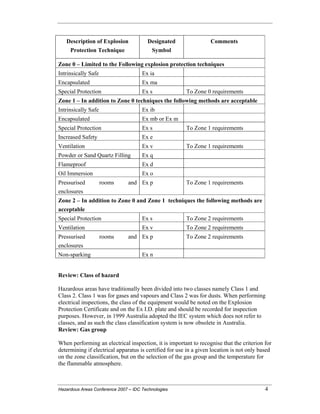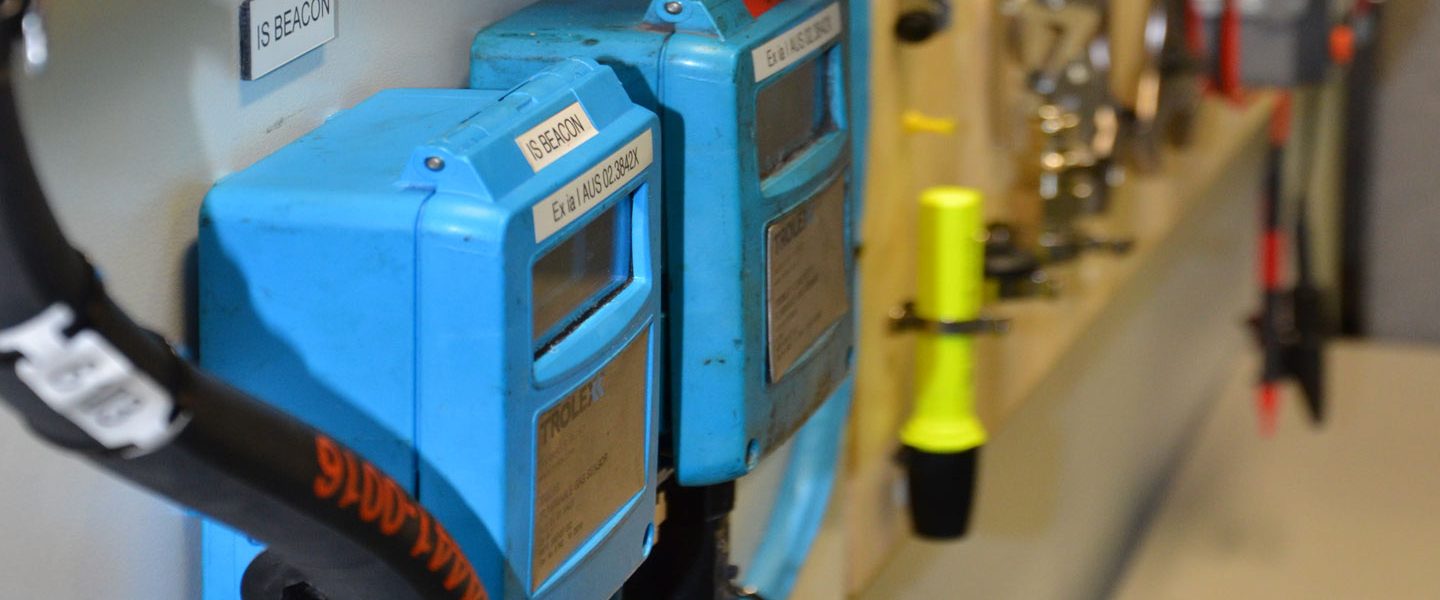Some Known Details About Roar Solutions
Some Known Details About Roar Solutions
Blog Article
Roar Solutions Can Be Fun For Anyone
Table of ContentsMore About Roar SolutionsGet This Report on Roar SolutionsSome Known Incorrect Statements About Roar Solutions
In order to secure setups from a potential surge a technique of evaluating and identifying a potentially hazardous location is required. The objective of this is to guarantee the correct choice and installation of tools to eventually protect against an explosion and to make certain security of life.
(https://pagespeed.web.dev/analysis/https-training-roarsolution-com-au/mm9wy036rp?form_factor=mobile)
No tools ought to be set up where the surface temperature of the devices is better than the ignition temperature level of the given risk. Below are some usual dust dangerous and their minimum ignition temperature level. Coal Dirt 380C 225C Polythene 420C (thaws) Methyl Cellulose 420C 320C Starch 460C 435C Flour 490C 340C Sugar 490C 460C Grain Dirt 510C 300C Phenolic Material 530C > 450C Aluminium 590C > 450C PVC 700C > 450C Soot 810C 570C The probability of the danger existing in a focus high adequate to trigger an ignition will certainly differ from area to area.
Unsafe location electric tools possibly designed for use in higher ambient temperatures. Area Repair By Authorised Personnel: Complex testing might not be required however specific procedures may require to be adhered to in order for the equipment to maintain its 3rd party rating. Each item of devices with an unsafe ranking need to be examined individually.
Facts About Roar Solutions Uncovered
The equipment register is a thorough database of devices records that includes a minimum set of areas to determine each thing's place, technological parameters, Ex-spouse classification, age, and ecological information. This info is essential for monitoring and managing the devices effectively within harmful areas. In contrast, for periodic or RBI tasting evaluations, the quality will be a combination of Thorough and Close inspections. The proportion of Detailed to Close assessments will certainly be identified by the Tools Risk, which is evaluated based upon ignition threat (the chance of a source of ignition versus the likelihood of a combustible environment )and the dangerous area category
( Zone 0, 1, or 2). This variation will certainly additionally affect the resourcing requirements for work preparation. When Lots are defined, you can create tasting strategies based on the sample size of each Lot, which refers to the number of random devices products to be evaluated. To determine the required sample size, two aspects need to be assessed: the size of the Great deal and the classification of examination, which shows the degree of effort that should be applied( reduced, normal, or enhanced )to the evaluation of the Great deal. By combining the classification of examination with the Lot size, you can then develop the ideal being rejected standards for a sample, suggesting the allowed number of damaged products discovered within that sample. For more information on this procedure, please describe the Energy Institute Guidelines. The IEC 60079 basic suggests that the maximum period in between examinations need to not surpass three years. EEHA inspections will certainly likewise be carried out outside of RBI projects as component of scheduled maintenance and tools overhauls or fixings. These assessments can be credited toward the RBI example sizes within the influenced Great deals. EEHA evaluations are conducted to recognize faults in electric devices. A weighted racking up system is vital, as a single tool might have several faults, each with varying degrees of ignition risk. If the mixed score of both inspections is much less than twice the fault rating, the Great deal is deemed appropriate. If the Great deal is still thought about unacceptable, it needs to undergo a complete evaluation or justification, which may trigger stricter examination procedures. Accepted Lot: The root causes of any kind of faults are recognized. If a common failing setting is discovered, additional devices might require maintenance. Faults are categorized by severity( Safety and security, Stability, Home cleaning ), guaranteeing that immediate issues are analyzed and dealt with immediately to mitigate any type of effect on safety or operations. The EEHA database must track and tape the lifecycle of mistakes together with the restorative actions taken. Implementing a robust Risk-Based Evaluation( RBI )method is important for ensuring compliance and safety in handling Electrical Devices in Hazardous Locations( EEHA) (eeha certificate). Automated Fault Scoring and Lifecycle Management: Effortlessly manage faults and track their lifecycle to enhance evaluation accuracy. The introduction of this support for risk-based inspection even more enhances Inspectivity's setting as a best-in-class option for regulative compliance, in addition to for any type of asset-centric evaluation use case. If you are interested in finding out more, we Check Out Your URL invite you to ask for a presentation and find exactly how our service can transform your EEHA monitoring procedures.
Some Known Factual Statements About Roar Solutions

In regards to eruptive risk, a hazardous location is an atmosphere in which an eruptive environment exists (or might be expected to be present) in amounts that require unique safety measures for the building, installment and use of equipment. eeha training. In this short article we discover the difficulties encountered in the work environment, the risk control procedures, and the required proficiencies to function safely
It issues of modern life that we produce, store or manage a range of gases or fluids that are regarded combustible, and a series of dusts that are deemed flammable. These substances can, in certain problems, create eruptive environments and these can have significant and terrible repercussions. Many of us recognize with the fire triangle get rid of any kind of among the three components and the fire can not happen, however what does this mean in the context of dangerous locations? When damaging this down right into its simplest terms it is basically: a combination of a specific quantity of launch or leak of a particular compound or product, blending with ambient oxygen, and the visibility of a source of ignition.
In most instances, we can do little regarding the levels of oxygen in the air, however we can have significant influence on sources of ignition, for instance electrical equipment. Dangerous areas are documented on the hazardous area classification illustration and are recognized on-site by the triangular "EX-SPOUSE" indicator. Below, among various other vital details, areas are split into three types depending on the hazard, the likelihood and period that an eruptive ambience will certainly exist; Zone 0 or 20 is deemed the most hazardous and Area 2 or 22 is regarded the least.
Report this page